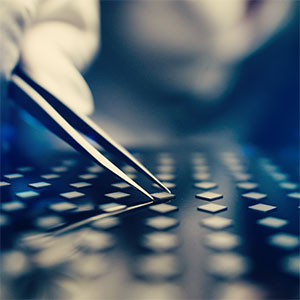
Traditional diamond organizations said they were disappointed at the Federal Trade Commission’s (FTC) overhaul of its Jewelry Guides—even as man-made diamond companies cheered.
In its latest revision, announced last week, the FTC made a number of changes to its traditional guidance regarding both lab-grown diamonds and diamonds in general. It removed the word natural from the definition of a diamond; allowed new descriptors for lab-grown gems as long as they clearly describe the product as not mined; said that implying lab-grown stones are not real could be deceptive; deleted the word synthetic from its list of approved lab-grown descriptors; and okayed the previously forbidden word gemstone to describe man-made stones.
The Guides still mandate clear disclosure of lab-grown diamonds, FTC attorney Reenah L. Kim said in an interview with JCK last week.
In a statement, World Federation of Diamond Bourses president Ernest Blom complained the new Guides show “too much of a bias” toward the lab-grown sector and noted they diverge from the Diamond Terminology Guidelines agreed to by his organization and other groups.
“Our paramount aim is always consumer confidence, and the revision has the potential to cause a degree of confusion,” he said. “[Allowing lab-grown companies to use new descriptors] might provide too much latitude in their marketing claims.”
Martin Rapaport, chairman of the Rapaport Group, argued that the change in the diamond definition “focus[es] on physical properties instead of scarcity and value differentiation, which are key factors in product definition and vital for consumer protection.”
Diamond Dealers Club president Reuven Kaufman issued a statement reminding the trade that companies can use the unadorned word diamond only for natural stones.
On the other hand, lab-grown diamond companies seemed euphoric about just about everything.
In a statement, ALTR president Amish Shah said that he was “pleased that the FTC has officially acknowledged what we have already have known, that created diamonds are real diamonds.”
Jayson Payne, founder and CEO of Ada Diamonds, commended the FTC on its “chemically accurate, linguistically correct, and well thought out” revision.
Diamond Foundry welcomed the changes to “guidelines long unfairly manipulated by the diamond mining lobby.
“We welcome the U.S. government taking action to ensure transparent and fair marketing,” it said in a statement. “Use of words such as synthetic can mislead consumers as they can mistake it with artificial. Man-made diamonds are not synthetic.”
The most notable new brand in the lab-grown derby, De Beers’ Lightbox brand, notably did not issue a response. Its parent company has often taken the opposite tack on these issues.
The natural diamond groups may have a tough time getting the FTC to reconsider: The agency has billed the revision as “final,” though Kim has said it “might be open” to further input.
The FTC’s Federal Register notice on its revised guides can be seen here, and its “Statement of Basis and Purpose” can be seen here. Jewelers Vigilance Committee has issued a “plain English explainer” of the Guides, which can be seen here.
(Image courtesy of Lightbox Jewelry)
- Subscribe to the JCK News Daily
- Subscribe to the JCK Special Report
- Follow JCK on Instagram: @jckmagazine
- Follow JCK on X: @jckmagazine
- Follow JCK on Facebook: @jckmagazine